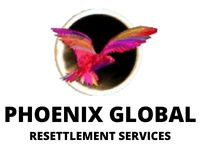Canada has emerged as one of the most sought-after countries for individuals aspiring to build a better life. With its high standard of living, multicultural environment, and strong economic prospects, Canada Immigration continues to attract professionals, students, and families from across the globe. If you’re planning to relocate, understanding the Canada PR Visa and the migration process to Canada is essential for a smooth and successful transition.
In this comprehensive guide, we will walk you through everything you need to know about moving to Canada, from the eligibility criteria and documentation to different immigration pathways and the benefits of permanent residency.
Why Choose Canada for Immigration?
Canada offers a range of benefits that make it an ideal destination for immigrants:
- High quality of life and healthcare
- Free education for children
- Multicultural society with a welcoming environment
- Robust job market and career growth opportunities
- A clear and transparent immigration process
These are just a few of the reasons why so many people are choosing Canada Immigration as their pathway to a better future.
Understanding the Canada PR Visa
The Canada PR Visa (Permanent Resident Visa) is a legal status that allows immigrants to live, work, and settle in Canada on a long-term basis. It is not the same as Canadian citizenship, but PR holders enjoy many of the same rights and benefits, including:
- The right to live and work anywhere in Canada
- Access to universal healthcare
- Social security and other government benefits
- Eligibility to apply for citizenship after a few years of residency
The PR status is usually valid for five years and can be renewed. It also enables you to sponsor your spouse, children, and other family members under specific immigration programs.
Main Pathways for Canada Immigration
Canada offers several pathways for immigration, depending on your qualifications, work experience, and reason for moving. Here are the major options under the migration process to Canada:
1. Express Entry System
This is one of the most popular and fastest routes to obtain a Canada PR Visa. The Express Entry system is designed for skilled workers and includes three federal economic immigration programs:
- Federal Skilled Worker Program (FSWP)
- Federal Skilled Trades Program (FSTP)
- Canadian Experience Class (CEC)
Applicants are ranked based on the Comprehensive Ranking System (CRS), which considers factors like age, education, work experience, language proficiency, and more.
2. Provincial Nominee Programs (PNP)
Each province in Canada (except Quebec) has its own immigration process tailored to its economic needs. If you have skills that a particular province is looking for, you may be nominated for permanent residence through a PNP. This boosts your chances significantly under the Express Entry system.
3. Quebec Skilled Worker Program (QSWP)
Quebec runs its own Canada Immigration program. If you’re proficient in French and interested in settling in Quebec, this is the pathway for you. It involves a two-step process: selection by the Quebec government and approval by federal immigration authorities.
4. Family Sponsorship
Canadian citizens and permanent residents can sponsor their family members such as spouses, common-law partners, dependent children, parents, and grandparents through the Family Sponsorship program.
5. Start-Up Visa Program
Entrepreneurs with an innovative business idea that can create jobs in Canada may apply for the Start-Up Visa Program. You’ll need to get support from a designated organization.
6. Student Pathway to PR
Many international students choose to study in Canada and then transition to permanent residency. After completing a post-secondary program, you can apply for a Post-Graduation Work Permit (PGWP), gain work experience, and then apply for PR via the CEC stream.
Step-by-Step Migration Process to Canada
Understanding the step-by-step migration process to Canada will help you plan better and avoid common pitfalls.
Step 1: Choose the Right Immigration Program
Based on your profile, determine the most suitable immigration pathway (Express Entry, PNP, QSWP, etc.).
Step 2: Get Educational Credential Assessment (ECA)
To verify your foreign degrees or diplomas, you need to obtain an Educational Credential Assessment from a designated agency like WES.
Step 3: Language Proficiency Tests
Take an approved English or French language test. IELTS is the most commonly accepted test for English proficiency in Canada Immigration.
Step 4: Create Your Express Entry Profile
If applying via Express Entry, create a profile on the IRCC portal. Your profile will be ranked against other candidates using the CRS.
Step 5: Receive an Invitation to Apply (ITA)
If your CRS score meets the cut-off, you’ll receive an ITA. You must submit a complete PR application within 60 days.
Step 6: Submit Documents
Gather and submit all required documents, including:
- Passport
- ECA report
- Language test results
- Work experience letters
- Proof of funds
- Medical and police clearance
Step 7: Wait for Processing
PR applications typically take around 6 months to process under Express Entry. PNP and other routes may take longer.
Step 8: Receive Confirmation of Permanent Residence (COPR)
Once approved, you will receive a COPR and a PR visa to enter Canada.
Benefits of Canada PR Visa
Obtaining a Canada PR Visa offers a host of benefits that can transform your personal and professional life:
- Live and work in any Canadian province or territory
- Access to subsidized healthcare and education
- Protection under Canadian law and the Charter of Rights and Freedoms
- Opportunity to apply for Canadian citizenship
- Ability to sponsor eligible family members
Common Challenges in the Migration Process to Canada
While the migration process to Canada is streamlined, it does come with certain challenges:
- Meeting the CRS score cut-off
- Securing job offers or provincial nominations
- Gathering all required documentation
- Navigating legal and procedural complexities
This is where professional immigration consultants like Phoenix GRS can make a significant difference by guiding you at every step.
How Phoenix GRS Can Help With Canada Immigration
At Phoenix GRS, we specialize in assisting individuals and families with seamless Canada Immigration. Here’s how we support you:
- Personalized consultation based on your profile
- Assistance with ECA, IELTS, and documentation
- Expert guidance for Express Entry and PNP
- Application review and submission
- Post-landing services and support in Canada
With a proven track record of successful migrations, Phoenix GRS stands as one of the most reliable consultants for Canada PR Visa and related services.
Canada Immigration in 2025 and Beyond: What’s New?
Canada plans to welcome over 500,000 new immigrants annually in the coming years under its Immigration Levels Plan. The demand for skilled professionals across IT, healthcare, engineering, and trades remains strong. The government is also focusing on welcoming international students and entrepreneurs, making this the perfect time to apply for a Canada PR Visa.
Here are some expected trends:
- Priority processing for in-demand occupations
- Greater emphasis on French-speaking immigrants
- More opportunities under Express Entry categories
- Regional immigration to attract newcomers to smaller communities
Conclusion
Immigrating to Canada can be life-changing, but it requires careful planning and expert support. Whether you’re a skilled worker, student, entrepreneur, or looking to reunite with family, the Canada PR Visa offers a wealth of opportunities. Understanding the migration process to Canada helps ensure a smooth journey to your dream destination.
Partner with Phoenix GRS for a reliable, transparent, and successful Canada Immigration experience. Let us help you turn your dream of living in Canada into reality.
Frequently Asked Questions (FAQs)
Q1: How long does the Canada PR process take?
A: For Express Entry, the average processing time is around 6 months from the date of application submission. Other routes like PNP may take 9–12 months.
Q2: What is the minimum CRS score required?
A: CRS cut-offs vary with each draw, but a competitive score is typically between 470 and 500.
Q3: Can I apply for PR without a job offer?
A: Yes, a job offer is not mandatory under Express Entry, although it can increase your CRS score.
Q4: Can my spouse and children be included in my PR application?
A: Yes, your spouse and dependent children can be included, and they receive PR status as well.
Q5: What is the cost of applying for Canada PR?
A: The total cost including language tests, ECA, biometrics, medicals, and IRCC fees ranges from ₹1.2 to ₹1.5 lakhs (INR) per adult.




